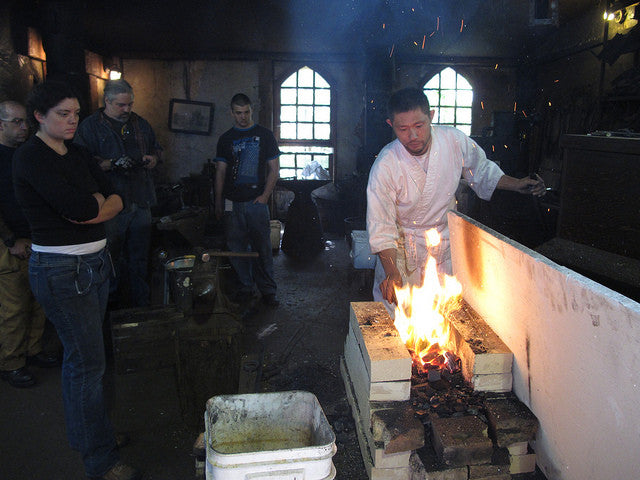Votre panier est vide


While dozens of cultures throughout history have produced swords, experts agree that Japan had one of the greatest influences on swordmaking. Korea and China have both adopted techniques used by their Japanese counterpart.
But Japanese swordmaking has come a long ways over the years, introducing new techniques to facilitate the process.
Periods of Japanese Swordmaking
Japanese swordmaking can be broken down into the following time periods:
Traditional Japanese Swordmaking
Swordmaking in Japan isn't just a trade; it's a form of art. Depending on the specific sword, it took weeks or even months for swordsmiths to produce a traditional Japanese sword. It wasn't just a one-person job, either. Rather, there were several artists who were directly involved in the sword's production. One artist was responsible for forging the sword's base shape, while another artist was responsible for folding the metal. There was even a third artist who's sole job was to polish the sword (togi).
Traditional Japanese swords were made with a high-carbon steel known as tamahagane. The swordsmith would fold this steel several times to "work out" any impurities, after which the resulting metal was heated and hammered into the desired shape. For swords like the katana, differential hardening was performed to achieve the sword's curved blade. This involves coating the blade with clay and quenching it in water.
Modern Japanese Swordmaking
Modern Japanese swords are produced in a similar manner as traditional Japanese swords, but with a few key changes. For starters, modern Japanese swords may use other types of high-quality steel. While tamahagane steel remains in use, it's limited and thus swordsmiths often use alternative steel types.
Some modern Japanese swordsmiths also use power hammers to speed up the process. A power hammer is a machine that raises a hammer for striking. Also known as an "open die power forging hammer," it's been used by swordsmiths since the turn of the 20th century, replacing the traditional trip hammer.
Furthermore, modern Japanese swordsmiths typically quench their blades in oil instead of water. This has a positive effect by minimizing stresses that can lead to distortion or areas of weakness in the blade.
Photo credit: Tamahagane Arts